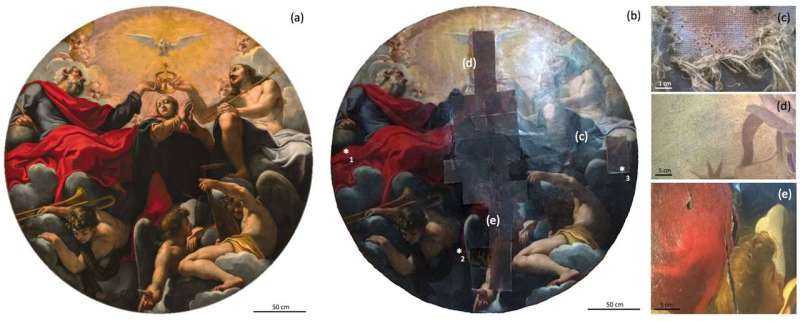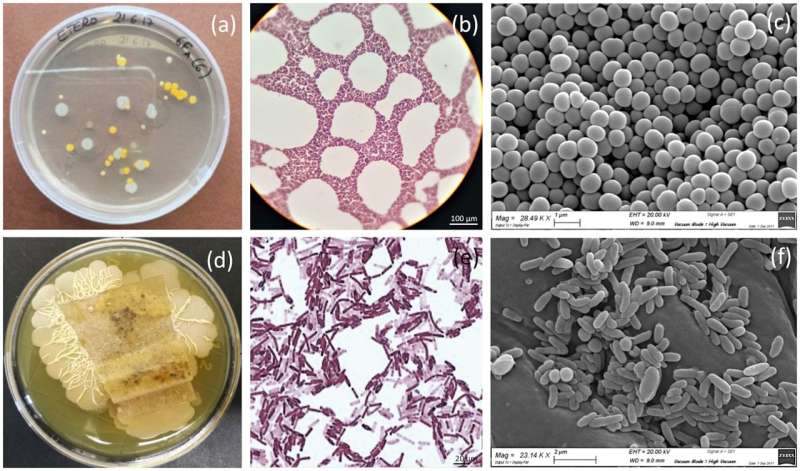A detailed look at the microorganisms that colonize, and degrade, a 400-year-old painting

What's a feast for the human eye may be a literal feast for microorganisms that colonize works of art, according to a new study in the open-access journal PLOS ONE by Elisabetta Caselli of the University of Ferrara, Italy, and colleagues. The researchers characterized the microbial community on a 17th century painting and showed that while some microbes destroy such works of art, others might be employed to protect them.
The wide variety of organic and inorganic materials that comprise a painting, such as canvas, oil, pigments, and varnish, can provide an ideal environment for colonizing bacteria and fungi, increasing the risk for biodegradation. To characterize the microorganisms on one such painting, "Incoronazione della Virgine" by Carlo Bononi, completed in 1620, the authors removed a 4 mm2 section of the painted surface adjacent to a damaged area.
Using a combination of microscopy and microbial culture techniques, the authors identified a variety of microbes which had colonized the painting. They isolated multiple strains of Staphylococcus and Bacillus bacteria as well as filamentous fungi of the Aspergillus, Penicillium, Cladosporium, and Alternaria genera. The authors note that some of the 17th century paint pigments used, notably red lac and red and yellow earths, may be nutrient sources for the microbes. They also tested a decontaminating biocompound which contained spores of three Bacillus bacteria and found that these could inhibit growth of both the bacteria and the fungi isolated from the painting.

The authors conclude that a wide range of bacterial and fungal species may inhabit such ancient paintings, but biocompounds potentially represent a novel approach for preserving works of art at risk of biodegradation.
The authors add: "Clarification of biotederioration processes in artworks is important, as it could help in preventing or solving the associated damages. This study investigated such aspects in a 17th century painting, by analyzing both microbial communities and chemical composition of painting, also evaluating a possible biological way to counteract these phenomena."
More information: Caselli E, Pancaldi S, Baldisserotto C, Petrucci F, Impallaria A, Volpe L, et al. (2018) Characterization of biodegradation in a 17th century easel painting and potential for a biological approach. PLoS ONE 13(12): e0207630. doi.org/10.1371/journal.pone.0207630
Journal information: PLoS ONE
Provided by Public Library of Science


















